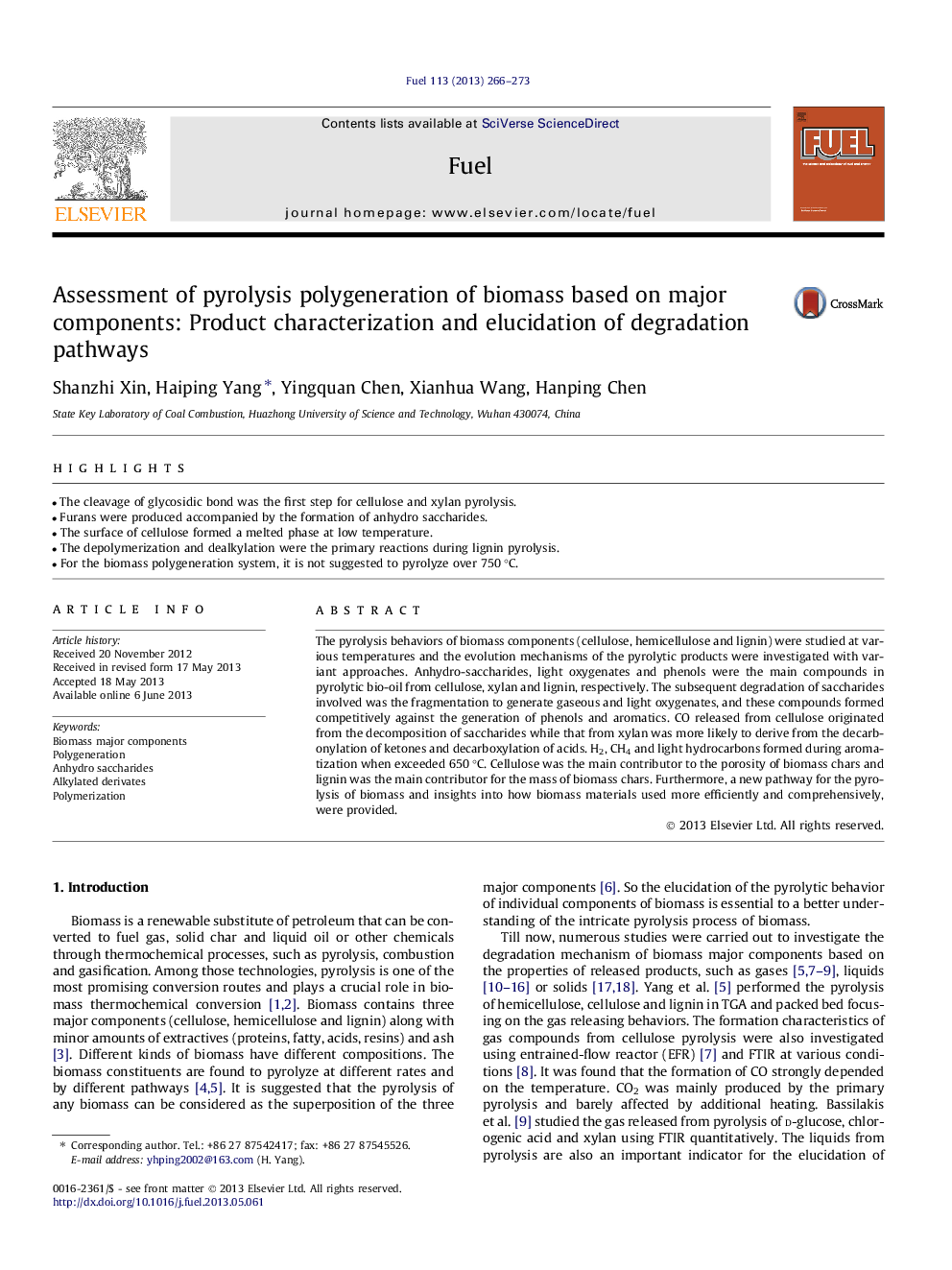| Article ID | Journal | Published Year | Pages | File Type |
|---|---|---|---|---|
| 6639816 | Fuel | 2013 | 8 Pages |
Abstract
The pyrolysis behaviors of biomass components (cellulose, hemicellulose and lignin) were studied at various temperatures and the evolution mechanisms of the pyrolytic products were investigated with variant approaches. Anhydro-saccharides, light oxygenates and phenols were the main compounds in pyrolytic bio-oil from cellulose, xylan and lignin, respectively. The subsequent degradation of saccharides involved was the fragmentation to generate gaseous and light oxygenates, and these compounds formed competitively against the generation of phenols and aromatics. CO released from cellulose originated from the decomposition of saccharides while that from xylan was more likely to derive from the decarbonylation of ketones and decarboxylation of acids. H2, CH4 and light hydrocarbons formed during aromatization when exceeded 650 °C. Cellulose was the main contributor to the porosity of biomass chars and lignin was the main contributor for the mass of biomass chars. Furthermore, a new pathway for the pyrolysis of biomass and insights into how biomass materials used more efficiently and comprehensively, were provided.
Keywords
Related Topics
Physical Sciences and Engineering
Chemical Engineering
Chemical Engineering (General)
Authors
Shanzhi Xin, Haiping Yang, Yingquan Chen, Xianhua Wang, Hanping Chen,
